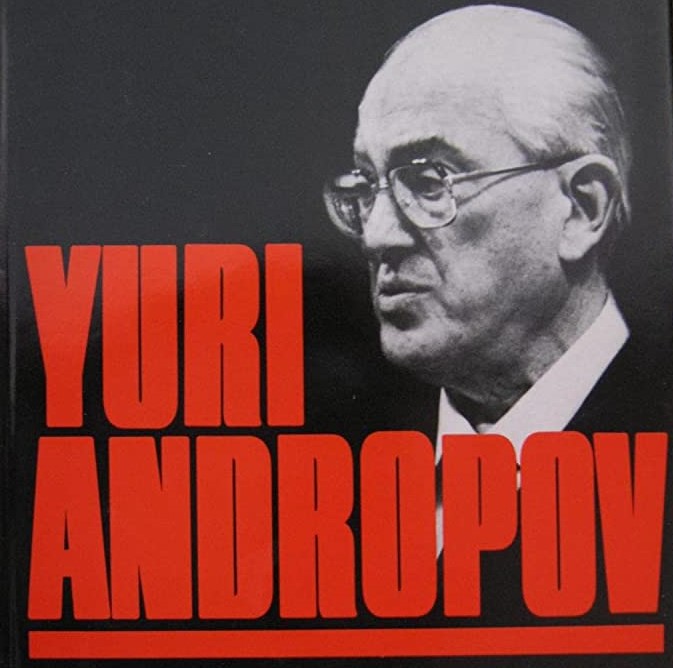He also served as the head of the KGB: Who is Yuri Andropov?
He was once one of the most influential leaders of the bipolar world, the first person of the Soviet Union. But his mission was short-lived...

November 12, 1982, was the beginning of an era that would have very important consequences in the history of the Soviet Union and the world. Leonid Brezhnev, who died two days before that date, was replaced by Yuri Andropov as the Secretary General of the CPSU. Andropov was a conscious Komsomol member in his early youth, and later a communist who held important positions in state and party positions. He was a hero who fought guerrilla wars behind invading German lines during the Second World War. He was serving as the Soviet Union ambassador to Budapest during the reactionary uprising in Hungary in 1956.
Yuri Vladimirovich Andropov (15 June [O.S. 2 June] 1914 – 9 February 1984) was the sixth paramount leader of the Soviet Union and the fourth General Secretary of the Communist Party of the Soviet Union. After Leonid Brezhnev's 18-year rule, Andropov served in the post from November 1982 until his death in February 1984.
(1914 Stavropol - 1984 Moscow) USSR statesman. He became president in 1983. He was born in 1914 in Nagutskaya, in the Caucasus. He is the son of a railroad worker. He started working as a telegraph technician at the age of 16, then sailed on the Volga River. In 1936 he entered KOMSOMOL, the youth organization of the Communist Party of the Soviet Union (CPSU). He worked in this organization until 1951. Andropov, who started to study water transport technician in Rylahsk in 1936, worked as the secretary of the KOMSOMOL organizations at the Water Transport Technical School and Volodorsuy Shipyard between 1936-1940. During World War II, he joined the Soviet army and fought on the Finnish front from 1940-1944.
Yuri Andropov went to Hungary in 1950 on a special diplomatic mission. After working as a charge d'affaires at the USSR Embassy in Budapest for a while, he became an ambassador in 1954. The suppression of the 1956 Hungarian Uprising by the USSR troops coincided with the time of Andropov's ambassadorship. In May 1957 he was elected to the Central Committee of the CPSU, where he was appointed head of the Socialist Countries Department. At the same time, he undertook the responsibility of State Radio-Television, print media, and cultural affairs.
Yuri Andropov was appointed head of the KGB, the USSR secret intelligence agency, in 1967. On the same date, he began to attend the meetings of the CPSU Politburo without voting rights.
Andropov, who became a plenipotentiary member of the Politburo in 1978, was appointed to the Party Secretariat in 1982. Andropov, who also took part in the ideological work of the party after the death of Suslov, one of the leading theorists of the CPSU, was appointed as the general secretary on November 10, 1982, upon the death of Leonid Brezhnev, who had been the general secretary of the CPSU for 18 years. He was elected head of state in 1983.
An interesting event that resonated all over the world during the Soviet Union's leader Yuri Andropov, and its tragic outcome became one of unforgettable memories.
Andropov wrote a letter to American little girl Samantha Smith on April 25, 1983.
At the end of 1982, ten-year-old American little girl Samantha Smith wrote a letter to Yuri Andropov, the new General Secretary of the Communist Party of the Soviet Union. In his letter, he first congratulated him on his new position, then asked whether he was afraid of a possible nuclear war, whether the Soviet Union wanted to prevent this danger, if the answer was yes, how they planned to do it, he wanted to be explained to him why the arms race was entered and what their aims were.
CPSU Secretary-General Yuri Andropov had not had time to reply to the letter, as he was very busy, due to this great task he was assigned after Leonid Brezhnev's death. When the answer she expected did not come, the little girl did not give up on her request, this time she applied to the Washington Embassy of the Soviet Union with a letter and asked if Yuri Andropov would answer her.
After that, Samantha got the answer she wanted. After a while, he received a letter addressed to him, signed by CPSU General Secretary Yuri Andropov. The letter began like this:
"Dear Samantha,
I have received your letter, as have letters sent to me from many countries of the world. It seems to me that you are a brave and very honest girl. Just like Becky in Mark Twain's Tom Sawyer book... Do you know, the children of my country also love and read this book by your compatriot Mark Twain.
Your questions are very serious and should be answered by every thinking person. And I will answer them seriously and honestly."
In the continuation of this letter, which is neither long nor short, Yuri Andropov explained in a serious way what can be done for peace and what they think about these issues. This initiative of the little girl created great sympathy in the Soviet Union administration and was also appreciated all over the world. Little Samantha is everywhere described as a pioneer of peace, and it was admirable that she had made such an effort at her age.
In his letter, Yuri Andropov invited Samantha to Russia with her parents for the summer of 1983. The family gladly came to this two-week trip to Moscow and Leningrad, and they were hosted as guests of Yuri Andropov.
After his health deteriorated, he was not seen in public since August 1983. After Andropov's death, he was replaced by Konstantin Chernenko, who was firmly committed to the status quo.
